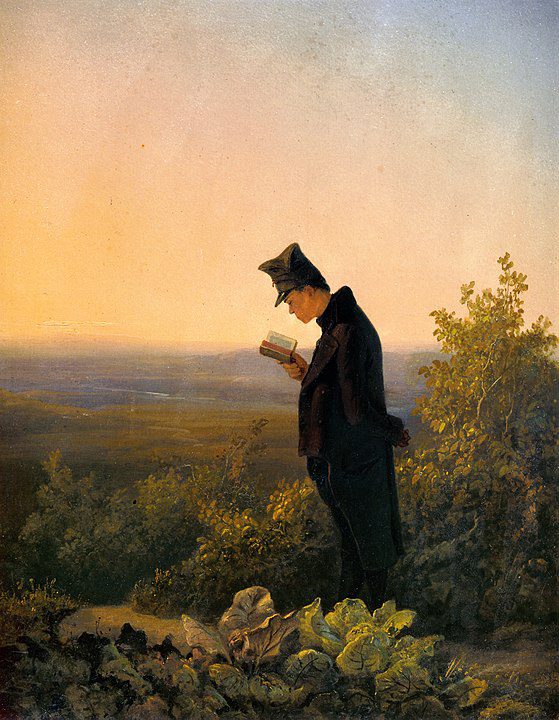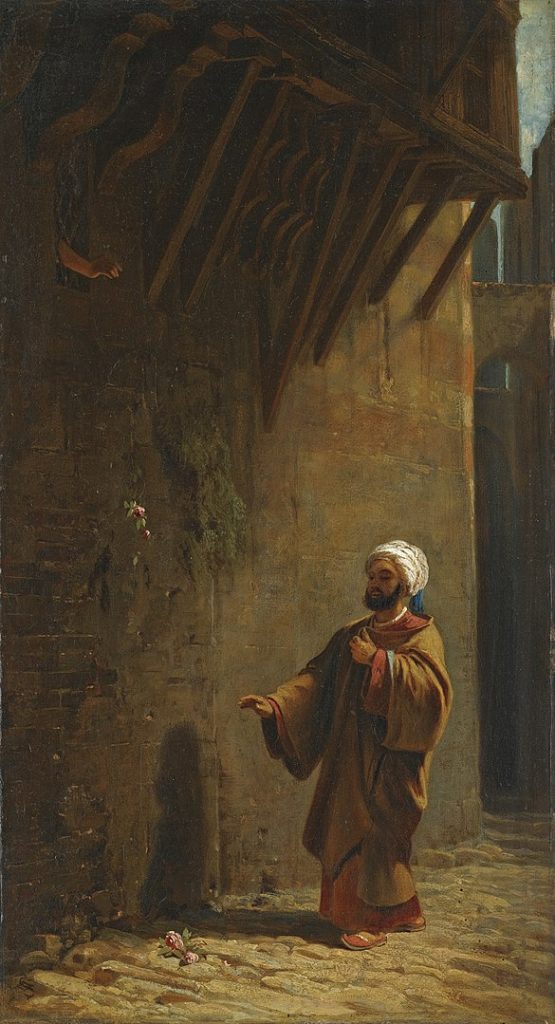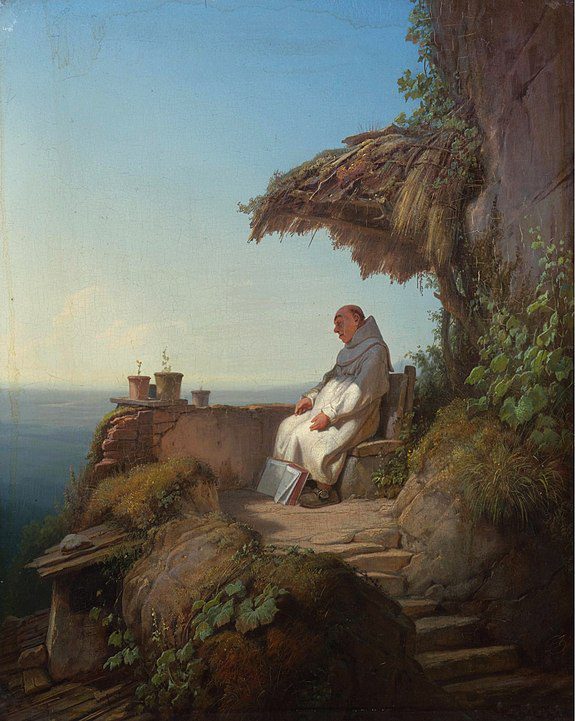
Carl Spitzweg, a renowned German painter of the Biedermeier era, was born on February 5, 1808, in Unterpfaffenhofen, Bavaria. Though his family initially hoped he would pursue a more practical career, Spitzweg’s passion for art led him to study painting at the Munich Academy of Fine Arts.
Spitzweg’s early works were influenced by Romanticism, featuring landscapes and scenes of everyday life imbued with a sense of nostalgia and whimsy. His meticulous attention to detail and skillful use of light and color earned him recognition as a master of genre painting.

One of Spitzweg’s most iconic motifs was the portrayal of the “poet-painter,” a whimsical character often depicted in solitary contemplation amid cluttered and chaotic surroundings. These paintings, such as “The Poor Poet” and “The Bookworm,” reflected Spitzweg’s own struggles as an artist and his deep appreciation for the creative process.
Satirical Wit
Despite his success as a painter, Spitzweg continued to work as a pharmacist to support himself financially. His career as an artist flourished nonetheless, and he became known for his satirical wit and keen observation of human nature.
Spitzweg’s paintings often celebrated the simplicity and charm of rural life, depicting quaint villages, rustic cottages, and idyllic landscapes with warmth and affection. His works resonated with audiences across Germany, capturing the imagination of a nation undergoing profound social and economic change.

In addition to his paintings, Spitzweg was also an accomplished poet and writer. His humorous poems and witty observations on contemporary life further endeared him to the public, earning him a reputation as a beloved figure in German cultural history.
Whimsical & Nostalgic
Spitzweg’s legacy endures as a testament to the enduring appeal of his whimsical and nostalgic vision of the world. His paintings continue to be celebrated for their charm, wit, and timeless appeal, captivating audiences around the world with their evocative portrayal of the human experience.
Despite facing personal challenges and setbacks throughout his life, including financial difficulties and the loss of loved ones, Spitzweg remained dedicated to his craft. His unwavering commitment to artistic expression and his unique ability to capture the essence of everyday life set him apart as one of the most beloved painters of the 19th century.

In conclusion, Carl Spitzweg’s paintings are a testament to the enduring power of art to uplift, inspire, and delight. His whimsical depictions of everyday life continue to captivate audiences with their warmth, humor, and timeless appeal, ensuring his place as a cherished figure in the annals of art history.




